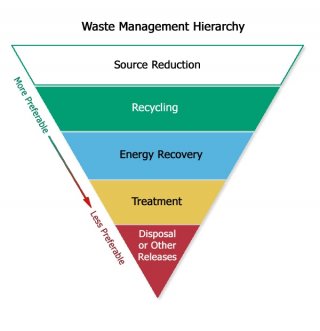Waste Management
Each year, the Toxics Release Inventory (TRI) Program receives information from more than 21,000 facilities on the quantities of TRI-listed chemicals they recycle, combust for energy recovery, treat, and release (including disposal) as part of their normal operations. These quantities are collectively referred to as production-related waste managed or ‘waste managed’The sum of all non-accidental chemical waste generated at a facility. It is the sum of on-site environmental releases (minus quantities from non-routine, one-time events), on-site waste management (recycling, treatment, and combustion for energy recovery), and off-site transfers for disposal, treatment, recycling or energy recovery.

Looking at waste managed over time helps track facilities’ progress toward reducing the amount of chemical waste they manage. Additionally, these trends show whether facilities are shifting away from releasing chemical waste into the environment towards preferable waste management practices.
EPA encourages facilities to implement source reduction (or pollution prevention) to reduce or eliminate the use of TRI-listed chemicals and the creation of chemical waste. For waste that is generated, the preferred management methods are recycling, followed by combustion for energy recovery, treatment, and, as a last resort, safe disposal or release of chemical waste into the environment. This order of preference, called the Waste Management Hierarchy, follows national policy created by the Pollution Prevention Act (PPA) of 1990.
- Facilities managed 34.6 billion pounds of TRI chemical waste, 90% of which was not released into the environment due to preferred waste management practices such as recycling.
- Since 2014, waste managed increased by 4.6 billion pounds (+15%), with a 7.0 billion pound increase (+49%) in recycling during this time.
As with any dataset, there are many factors to consider when using TRI data. Find a summary of key factors associated with the data used in the National Analysis in the Introduction. For more information see Factors to Consider When Using Toxics Release Inventory Data.
This page was published in August 2025 and uses the 2023 TRI National Analysis dataset made public in TRI Explorer in October 2024.
